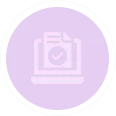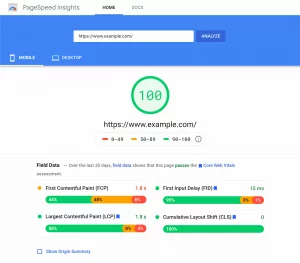As a buyer, we all know that relying on random discount coupons is not a sustainable strategy for driving long-term sales. Success lies in the strategic and systematic implementation of coupon marketing campaigns. The key is to offer personalized coupon delivery, which enhances the customer experience and can significantly drive repeat purchases.
To achieve this, understanding your customers’ pain points is essential. By identifying and addressing these challenges, you can create a value proposition that resonates with your target audience. Your couponing strategies can either make or break your relationship with paying customers.
Coupons influence the buying decisions of nearly every consumer, but how do we optimize their use? Today, we’ll explore the key touchpoints and how to incorporate them effectively into your coupon marketing strategy.
Let’s dive into it!
Why Do Coupon Codes Work?
Coupon codes significantly enhance the shopping experience by giving customers the feeling that they’re getting a great deal. In fact, a study by the Center for Neuroeconomics Studies found that receiving a coupon is more physically pleasurable than receiving a gift, illustrating just how much people value discounts and promotions.
For consumers, coupon codes provide an immediate incentive to make a purchase. Not only do customers feel they’re saving money, but they also experience a sense of reward for getting a better price on the product they want. From a business perspective, coupon codes are an effective tool for boosting sales by encouraging customers to follow through with a purchase they may otherwise have postponed or skipped altogether.
The Psychology Behind Coupon Codes: Why They Work for eCommerce Shoppers
1. Increased Purchase Value:
Coupons often lead to higher cart values. Consumers tend to add more items to their cart when they know they can redeem a discount on their purchase. This is particularly true for “threshold” discounts, where customers must spend a certain amount to unlock a coupon (e.g., spend $50, get $10 off).
2. Encouraging Social Media Engagement:
Coupon codes can be used strategically to drive customers to engage with your brand on social media, follow your accounts, or share your content. For example, you could run a promotion where customers get a coupon code in exchange for tagging a friend on Instagram or Facebook.
3. Building Your Email List:
Offering coupon codes in exchange for newsletter sign-ups is a powerful tactic for growing your email list. By offering a discount for their next purchase, you encourage customers to provide you with their contact information, which can then be used for future marketing campaigns and promotions.
4. Collecting Valuable Customer Data:
Coupons can also serve as a tool for gathering insights about your customers. By offering personalized codes or linking them to specific campaigns, you can track which platforms, promotions, or products are driving the most sales. This data is invaluable for refining your marketing strategies and targeting your efforts effectively.
5. Customer Retention:
Coupons aren’t just for acquiring new customers; they can also be highly effective in retaining existing ones. Offering loyal customers exclusive coupon codes or early access to sales can make them feel valued and encourage repeat business.
6. Gaining a Competitive Edge:
By offering lower prices through coupons, you can attract customers who might otherwise purchase from a competitor. A well-timed promotion can help you capture market share and turn casual browsers into loyal buyers. When customers feel they are getting a better deal, they are more likely to choose your business over others.
7. Personalizing the Shopping Experience:
In the modern retail landscape, personalization is key. Research shows that 80% of online shoppers are more likely to purchase from a brand that offers a personalized experience. Personalized coupons tailored to individual preferences or behaviors can significantly enhance a customer’s shopping journey, leading to increased loyalty and higher conversion rates.
What Are Customer Pain Points, and How Does Coupon Marketing Address Them?
Customer pain points refer to the specific problems or frustrations that customers experience while interacting with your brand or purchasing your products. Identifying and addressing these pain points is crucial for designing coupon marketing strategies that truly resonate with your customers. These pain points can be broadly categorized into four areas:
1. Price Sensitivity
At first glance, many might think that price sensitivity is the only customer pain point that coupon marketing can address. After all, offering a discount directly mitigates concerns about the cost of products or services. But, price sensitivity is just one part of the equation. Let’s dive deeper.
Price sensitivity arises when customers perceive that the value of a product doesn’t justify its price. This could be due to high product prices, unexpected additional costs (like shipping, hidden fees, or setup charges), or a lack of clear value that justifies the expense. To tackle this issue effectively, you can automate personalized coupon delivery tailored to specific products or categories, offering discounts that directly address customers’ concerns about price.
For example, a customer might hesitate to purchase a high-priced item. By sending them a personalized coupon for a discount on that particular product, you’re not only addressing their price sensitivity but also encouraging them to proceed with the purchase, leading to higher conversion rates.
2. Productivity/Time Efficiency
Another often-overlooked pain point is the customer’s need for time efficiency. In today’s fast-paced world, consumers are increasingly seeking products or services that save them time or improve their productivity. If the purchasing process is too complex or time-consuming, it can cause frustration and potentially lead to abandoned carts.
Coupon marketing can ease this pain point by offering incentives that make the buying process smoother and faster. For example, a first-time purchase coupon could motivate customers to act quickly, while a time-limited coupon could create a sense of urgency to complete a purchase before the offer expires.
3. Process/Usability Experience
Customers are highly sensitive to the ease with which they can navigate through your website, find products, and complete their purchases. A complex checkout process or confusing website layout can deter customers, even if the product is exactly what they need. This is where coupon marketing can enhance the overall usability experience.
Offering incentives such as a first-purchase discount, compensatory coupons for delayed deliveries, or special offers for trying new products can significantly improve the customer experience. Customers will appreciate the added value of a coupon while also benefiting from a streamlined, enjoyable purchasing journey.
4. Trust & Support
The final pain point is trust. A lack of trust in your brand or website can prevent customers from making a purchase, even if they are interested in your products. This pain point can stem from various factors, such as concerns about product quality, the legitimacy of your website, or your customer service responsiveness.
Coupon marketing can help build trust and strengthen relationships with your customers by offering transparent, competitive pricing, free shipping, or hassle-free return policies. When customers feel secure in their purchases and are confident that they can rely on your brand, they are more likely to become repeat buyers. Offering exclusive coupons for loyal customers is a great way to foster trust and loyalty.
What Else Can Coupon Marketing Achieve Beyond Mitigating Price Sensitivity?
1. Building Trust and Support
Coupon marketing can significantly contribute to building customer trust. By offering competitive pricing, free shipping, and hassle-free returns, you show that you stand behind your products and value your customers. Additionally, personalized coupons based on purchase history or loyalty status can create a sense of exclusivity, enhancing your customers’ perception of your brand.
2. Improving Usability and Customer Experience
Coupons don’t just need to address price; they can also be used to improve the customer’s experience. For example, offering compensatory coupons for delayed deliveries or providing special discounts for first-time buyers helps create a more positive shopping experience. Incentives for trying new products or for providing customer feedback can enrich the overall usability experience.
3. Encouraging Engagement
Coupons can be used as a reward for customer engagement, such as leaving reviews, participating in surveys, or interacting with your brand on social media. By offering exclusive discounts for such actions, you incentivize your customers to become more involved with your brand, increasing both engagement and loyalty.
4. Collecting Customer Data
One of the greatest benefits of personalized coupon marketing is the data it generates. By tracking which customers use certain coupons and what types of discounts are most effective, you can gather valuable insights about your customer base. This data can help refine future marketing efforts, making them more targeted and effective.
Best Types of Coupons Your eCommerce Store
1. Free shipping coupon
If your shop does not currently provide free shipping, consider adding it because carts are checked out or abandoned based on shipping prices.
If you don’t, consider using a coupon for free shipping. Even if you currently provide free delivery, a voucher for speedier free shipping (such as two-day or overnight) is an extremely appealing offer.
2. Percent-off Discount Coupons
These are the most frequent and widely used coupon kinds among businesses. Decide on a percentage discount you’d like to provide on purchases costing a specific amount.
For example, save 20% on orders over INR 2,000. In such circumstances, when buyers discover that they may get a discount by making a minor purchase, they may have things for 700rs waiting in their basket. They’ll most likely add one or two products to achieve the INR 2000 limit.
You may also use these coupons to increase your email list. Give consumers a 20% discount if they provide email addresses or make their first purchase. Buyers are constantly looking for offers that save them money.
According to statistics, 90% of shoppers are more likely to make a buy from a brand offering discounts or use shoppers use a coupon or discount code throughout the year
3. Buy one, get one free
The buy one, get one free option, sometimes known as the BOGO deal, is ideal for pushing sales at various times of the year.
BOGO deals are often appropriate for a certain range of products – those that might be given away for free with a large purchase. People buy costumes, sweets, and decorations during holiday sales, such as Halloween or Christmas. You may also create similar coupons for occasions when people want a supply of various items, such as summer vacation (swimwear, caps, flip flops) or back to school.
4. Cart Deals
Consider a client browsing a store with no intention of purchasing anything. A salesperson notices this and approaches the shopper to advise them of a last-minute discount if they buy anything. It may suddenly stimulate the customer’s interest, resulting in a sale.
When individuals leave their carts, a cart voucher works just as described. You may re-engage these clients by emailing them coupons offering a 5% or 10% discount on their order.
5. Automated Discounts
Coupons are amazing, but only if your customers remember to use them at the register. In such a case, after the order has been accepted, your business can receive a call from customer support asking to have the discount applied. Another issue would be if the consumer decided to just cancel the order and start over.
Instead of needing to remember to copy and paste the code, your consumer will automatically know they are receiving the discount when they use an automated coupon. They just purchase what they want, and the promo coupon is added for them via your checkout app. They got the deal they wanted and had a wonderful experience with your brand—no disappointments, no difficulties.
6. Points for loyalty
The amount of money spent at a retailer determines how many loyalty points you may accrue.
For instance, if you give your customers one loyalty point for every $1 spent, they will receive one point for their purchases at your business.
You may exchange loyalty points for savings on subsequent purchases. These are great discounts to provide current clients in order to promote referrals. When you use wployalty, they are also very simple to implement:
A rewards program is simple to set up, and you can choose what kind of loyalty points to provide, to whom, and when.
7. Festive and Seasonal Sales Coupons
Conducting a sale during festivals, holidays, or the end of the season is another popular marketing strategy. During the holiday season, people typically have a long list of things they want to acquire.
They are going on a buying binge, sometimes even making rash purchases. Displaying up to 50% or 70% on your eCommerce website using banners or billboards attracts a lot of people. Offering discounts throughout the holidays is a great idea as people shop for friends, family, and themselves. It provides you with the opportunity to increase sales.
8. Coupons for a gift with purchase
Coupons for free gifts with purchases give a free present when a certain item is purchased.
For instance, if you provide a consumer a purchase voucher for a free shirt together with a free gift, they will receive a free shirt with their purchase.
These may be the best option if you have extra stock. You may encourage clients to make a purchase while also getting rid of our outdated goods.
Offering free gifts with WooCommerce may be done in a number of ways. Nevertheless, Advanced Coupons expedites and simplifies the implementation of each one.
9. Coupons With a Mystery Or Spin-The-Wheel
By providing a surprise or spin-the-wheel coupon in your emails, you can also apply gamification to your coupon strategy and add an entertaining and engaging aspect. These kinds of discounts might assist in bringing some fun or competitiveness to your marketing campaigns.
For gifts and contests, they can be ideal. They also strive to strengthen and expand loyalty initiatives.
10. Mobile Discount Codes
Alright, so a “mobile” coupon isn’t quite the same as a free gift voucher or a loyalty discount. However, we’re adding it here so you won’t forget that there are other ways to acquire coupons besides email.
In fact, you can be missing out on a significant amount of revenue if you overlook mobile. According to an estimate by Juniper Research, digital coupon redeem exceed over $91 billion in 2022, with mobile devices accounting for 80% of these redeems.
Therefore, 2022 should be the year you begin distributing your store’s promo codes by SMS, push notifications, or your ecommerce chatbot if you haven’t already. And make use of the several coupon kinds that we’ve discussed here to increase sales, please clients, and expand your web company.
11. First-Time Purchase Discount
If you give your consumers a discount on their first purchase, there’s a considerable chance they’ll rush into your store. One of the best ways to draw in new consumers is to display discounted items that are ideal for first-time purchases as a point of attraction. Customers may be more likely to remember you if you even just give them a tiny discount the first time around. This increases the possibility that they will not only buy something for themselves but also urge their friends and relatives to do the same.
12. Discount on Newsletter Subscription
How can you keep clients coming back after only one purchase or guarantee consistent sales? You use promotional emails to connect with your clientele. The problem lies in the fact that they dislike having you constantly show up in their inboxes.
As a result, people don’t sign up for new websites. But if they receive a 10% or 15% discount in exchange for subscribing, they’re far more inclined to do so. Provide these kinds of freebies if you want to build an email list. Although obtaining the emails of possible prospects is never simple, offering a discount might help.
Also read: Unlock the Power of Newsletters: Inspiring Examples to Boost Your Email Marketing! – Nestify
Coupon Code Analytics: Measuring the Success of Your Promotions in eCommerce
1. Slash Extra Costs and Convert Cart Abandonment into Sales with Discount Coupons
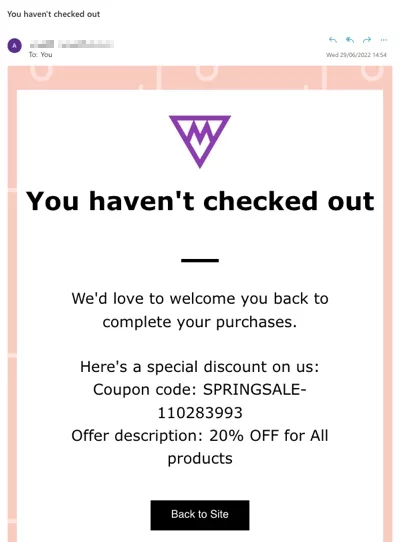
Abandoned carts are a thorn in the side of eCommerce businesses, and with almost 70% of shopping carts being abandoned, it’s clear that this issue is widespread. The main reason shoppers abandon their carts? Extra, unexpected costs. Shipping fees, taxes, handling charges—these hidden expenses can push potential buyers away.
Imagine this: a $2 shipping cost on a $10 item can be enough to make a customer second-guess their purchase. But you can easily turn the tables by introducing discount coupons. By offering discounts that offset those dreaded extra charges, you can make the buying experience more appealing, especially for high-spending customers or frequent shoppers. These coupons target the very reasons people abandon their carts and encourage them to follow through, boosting both your conversion rates and your overall revenue.
2. Turn Customer Feedback into Gold with Reward Coupons
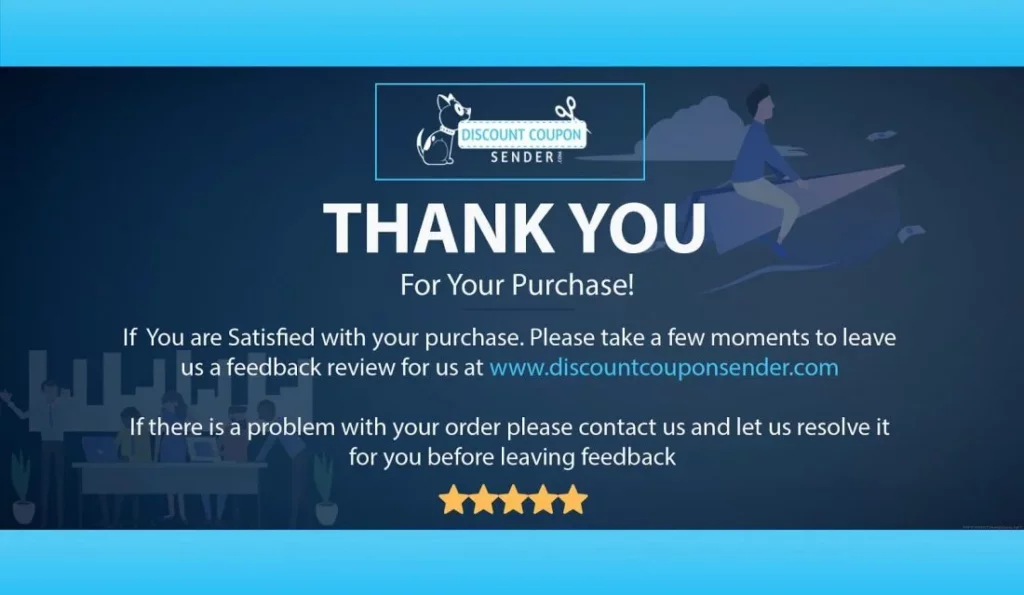
Businesses thrive on feedback—without it, how can you improve and grow? But customers don’t always volunteer their thoughts, so why not offer an incentive? A discount coupon in exchange for feedback is an excellent way to gather valuable insights while keeping customers happy.
This strategy provides a triple benefit: first, it gives you the feedback you need to enhance your products or services. Second, it encourages repeat purchases by giving customers a reason to come back. And third, it builds customer satisfaction, showing that you value their opinions. It’s a win for your business and a win for your customers.
3. Automate Personalized Coupons to Target Specific Segments
Personalization goes beyond simply addressing customers by their name—it’s about offering them tailored experiences based on their behaviors, preferences, and buying patterns. In today’s eCommerce landscape, personalized offers are more effective than ever. By automating coupon delivery for different customer segments, you can make each offer relevant and impactful.
For instance:
- New users can receive a “first purchase” discount, like 20% off their initial order.
- Loyal customers could get a special “thank you” discount, such as 35% off on their next purchase.
- Inactive customers can be lured back with a “come back” offer, like 25% off for those who haven’t shopped in six months.
- Cart abandoners can get a gentle nudge with a discount offer, like 10% off for those who left items behind for more than three days.
Segmenting your customer base and automating these offers not only saves you time but also ensures that each offer speaks directly to the needs and behaviors of the individual.
4. Tap Into the Power of FOMO with Limited-Time Discounts

There’s a psychological trigger that drives a lot of our purchasing decisions: fear of missing out (FOMO). It’s incredibly effective when used strategically in marketing. Limited-time offers create a sense of urgency that pushes potential customers to act quickly—no one wants to feel left out of a great deal.
Research has shown that nearly 50% of Millennials find limited-time offers particularly enticing. To capitalize on this, you can create time-sensitive promotions that are hard to ignore. Flash sales, early-bird deals, or exclusive offers during festive periods all work well. These limited-time offers are great for shoppers in the consideration or decision-making phase, encouraging them to buy before the deal expires.
5. Encourage Sign-Ups with Instant Discount Coupons
Getting customers to sign up for your newsletter or create an account can sometimes feel like pulling teeth. But offering an immediate reward in the form of a discount coupon can make all the difference. When customers see that they’ll get a tangible benefit just for signing up, they’re more likely to take that first step.
You can easily integrate sign-up incentives through lead capture forms, pop-ups, and well-placed CTAs across your website. Tools like HubSpot CRM offer simple yet powerful tools for creating pop-up forms or landing pages that convert visitors into subscribers. Once they’re on board, you can continue nurturing them with personalized offers and content to keep them engaged.
6. Distribute Coupons Across Multiple Channels for Maximum Reach
The beauty of discount coupons is that they aren’t limited to one platform—they can be shared across a variety of channels. While email remains a powerful tool, there are many other ways to reach your customers. Social media platforms like Instagram, Facebook, Telegram, and even Discord offer new opportunities to distribute your coupons.
The key is understanding where your target audience spends most of their time. For instance, if your customers are active on Instagram, that’s where you should be promoting your coupons. Don’t limit yourself to just one platform—spread your coupon promotions across multiple channels for a wider reach and increased engagement. You can also centralize your efforts with tools like HubSpot Social Media Manager, which ensures brand consistency and simplifies tracking across platforms.
7. Make Your Insiders Feel Special with Exclusive Discount Coupons
Do you have a membership or loyalty program? Offering exclusive discount coupons to members not only rewards their loyalty but also gives non-members a reason to sign up. These insider offers show your current customers that you value their commitment, and they provide an added incentive for others to join the club.
Loyalty programs are more than just discounts—they build a sense of exclusivity. When existing members see they’re receiving perks others don’t, they feel more connected to your brand. This strategy also works wonders in encouraging non-members to consider subscribing, helping to grow your membership base.
8. Amplify Your Referral Program with Discount Coupons
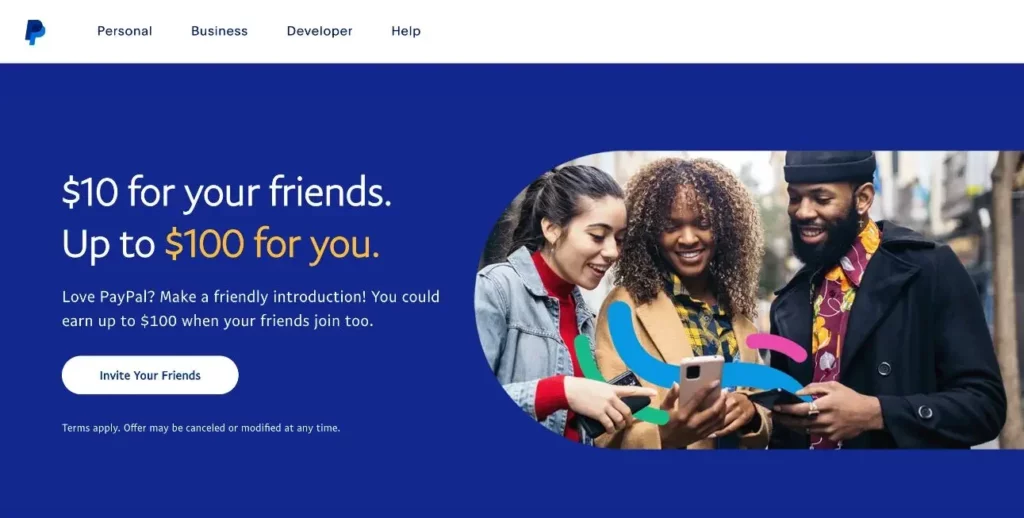
Referral marketing is one of the oldest tricks in the book—and for good reason. It works. When existing customers refer new ones, both parties benefit. A great way to enhance this program is by offering a discount coupon as a reward.
When a customer refers a friend, both the referrer and the referee can receive a discount once the new customer makes a purchase. This not only incentivizes referrals but also helps you gain new customers who already have a sense of trust in your brand. It’s a classic example of turning one loyal customer into two, all while strengthening the relationship with your current base.
9. Move Slow-Selling Items with Targeted Discount Coupons
Every store has those products that just don’t sell as fast as others. Instead of letting these items gather dust, use targeted discount coupons to push them out the door. Offering discounts on these slow-selling items can help clear out inventory while also boosting sales.
Pairing slow-moving products with a percentage discount or bundling them with more popular items is a great strategy. This way, customers feel like they’re getting more value, and you’re able to move products that might otherwise go unsold.
10. Encourage Bigger Purchases with Spending Threshold Coupons
Want to increase your average order value? Create spending threshold coupons that encourage customers to spend more. For example, offer a discount if customers spend a certain amount, like “Spend $50 and get 15% off your entire order.”
This strategy encourages customers to add more items to their cart to meet the threshold for the discount. It’s an easy way to increase revenue without offering deep discounts on individual products. Plus, you can automate this process, ensuring that every customer is aware of the potential savings before they check out.
11. Design Coupons That Grab Attention
The design of your coupon matters more than you might think. A coupon that’s visually appealing and easy to understand is more likely to be redeemed. A cluttered, hard-to-read coupon will have the opposite effect.
Think about the color, font, and layout of your coupon. It should align with your brand’s identity and catch the customer’s eye. By paying attention to design, you can significantly improve the chances of your customers using the coupon, which ultimately leads to higher conversion rates.
12. Monitor Coupon Performance to Optimize Your Strategy
Creating great coupons is only part of the equation. The real magic happens when you track their performance and adjust your strategy based on what works. Tools like HubSpot CRM make it easy to monitor which coupons are being redeemed the most, allowing you to identify trends and improve your future campaigns.
By keeping a close eye on your coupon performance, you can fine-tune your approach to maximize results. This data-driven approach ensures that you’re always optimizing your coupon marketing efforts for the best possible outcomes.
Using Coupon Codes to Nurture Relationships with eCommerce Shoppers
Coupons can work wonders in transforming your customers’ shopping experience and fueling remarkable growth for your business when strategically woven into your eCommerce plan. Whether it’s through offering discounts, loyalty points, or even freebies, coupons are a powerful tool to not only attract new shoppers but also foster long-term relationships with your existing customers.
By offering exclusive deals and limited-time discounts, you create an exciting sense of urgency while showing your customers that you appreciate their business. The beauty of couponing lies in its flexibility—test different types of offers to discover which ones resonate most with your audience. This experimentation leads to enhanced brand loyalty, deeper customer engagement, and ultimately, more sales.
Ready to elevate your eCommerce game? Start your free trial with Nestify Hosting today and experience hassle-free, reliable hosting that grows with your business. Don’t wait—sign up now and unlock the perfect platform to support your online store’s success!
FAQs on Coupons Your eCommerce
How can I stop fraud or misuse of coupons?
Coupon abuse may be avoided by putting in place safeguards such as usage restrictions, expiration dates, and unique coupon codes. Frequent tracking and examination of coupon usage trends might potentially reveal possible fraudulent activity.
Do discount coupons hurt a company’s profit margins?
In the long run, coupons can result in higher client acquisition, retention, and overall revenue, even if they may lower profit margins on specific purchases. Finding the right balance between continuing to be profitable and providing discounts is crucial.
What resources can I employ to successfully handle discount campaigns?
Make use of marketing automation solutions and eCommerce systems that have strong coupon management capabilities. These solutions facilitate effective and data-driven decision-making by streamlining the development, delivery, and tracking of discount programs.
When is the right time to provide coupons?
The frequency of discount promotions should be determined by taking into account competition activity, customer behavior, and seasonal trends. While maximizing sales chances, a diverse strategy that combines sporadic promotions with focused advertising helps sustain client attention.

